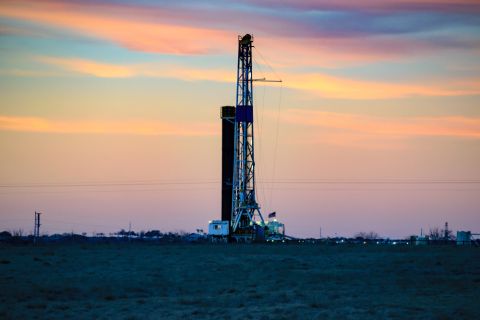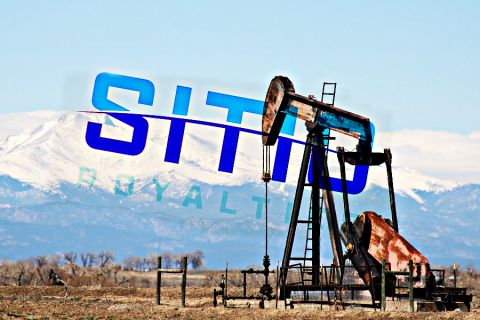Saudi Arabia spearheaded a deal on Dec. 6 that will see the OPEC+ group of oil producers commit to some of the sector’s deepest output cuts in a decade aiming to avert oversupply and support prices.
Saudi with OPEC peers and allies led by Russia backed a plan that could see cuts of as much as 2.1 million barrels per day (MMbbl/d), Saudi Energy Minister Prince Abdulaziz bin Salman said.
Brent oil rose 2% to more than $64 per barrel after the announcement.
The figures include an extra 500,000 bbl/d in cuts to take the OPEC+ target 1.7 MMbbl/d, or 1.7% of global demand, plus Saudi continuing to cut 400,000 bbl/d more than its quota.
“The Saudi goal was not necessarily to push oil prices significantly higher, but rather... to put a firm floor under them during the first quarter to temper any seasonal weakness,” said Amrita Sen, co-founder of Energy Aspects.
OPEC+, which includes more than 20 producers, pump over 40% of the world’s oil. They are taking action ahead of expected output increases next year by countries not participating in the cuts led by top producer the United States.
Producers will meet again in early March to decide their next move, said Prince Abdulaziz, adding that there was “deep belief” their collaboration would continue.
Of the 500,000 bbl/d additional cuts, OPEC will shoulder 372,000 bbl/d and non-OPEC producers an extra 131,000 bbl/d, OPEC announced.
“It’s the best outcome you could have expected. It puts a floor under prices at $60 Brent but [we’re] still likely in a $60-65 Brent market until the global economy improves and then we could see $65 to $70 Brent in Q2,” said Gary Ross, founder of Black Gold Investors.
March Meet
OPEC+ will deepen cuts for the first three months of 2020, shorter than the six- or 12-month scenarios some OPEC members wanted.
OPEC’s meeting on Dec. 5 in Vienna to deliberate on policy and issues such as compliance with existing targets lasted more than five hours. The extended talks forced the cancellation of a news conference and gala dinner for delegates aboard a boat on the Danube.
Compliance has been a sticking point since the coordinated cuts began in 2017, which is why Saudi Arabia has been cutting more than required. Iraq and Nigeria are among those over-producing.
Eleven of OPEC’s 14-member states are participating while Iran, Libya and Venezuela are exempt.
Saudi rival Iran, which Washington blamed for attacks on Saudi oil facilities in September, showed surprising support for Riyadh at the talks, delegate sources said. This was the first OPEC meeting since the attacks, which crippled the world's biggest oil processing facility.
OPEC+ adds Russia and nine other non-OPEC players—Azerbaijan, Bahrain, Brunei, Kazakhstan, Malaysia, Mexico, Oman, South Sudan and Sudan.
Saudi Arabia needs to provide a floor for oil prices to support both its oil revenue—the source of almost 70% of its budget—and the pending stock market debut of state-owned oil giant Saudi Aramco.
Shares in Aramco are expected to begin trading this month in the world’s biggest IPO.
Prince Abdulaziz told reporters he expected the company to be worth more than $2 trillion in a few months.
Recommended Reading
Permian Resources Continues Buying Spree in New Mexico
2024-01-30 - Permian Resources acquired two properties in New Mexico for approximately $175 million.
Marketed: EnCore Permian Holdings 17 Asset Packages
2024-03-05 - EnCore Permian Holdings LP has retained EnergyNet for the sale of 17 asset packages available on EnergyNet's platform.
Diamondback Energy to Acquire Permian’s Endeavor for $26B
2024-02-11 - Diamondback Energy will acquire Endeavor Energy in a cash-and-stock agreement that will create a Permian juggernaut with a combined value of more than $52 billion in a merger of near equals.
Analysts: Diamondback-Endeavor Deal Creates New Permian Super Independent
2024-02-12 - The tie-up between Diamondback Energy and Endeavor Energy—two of the Permian’s top oil producers—is expected to create a new “super-independent” E&P with a market value north of $50 billion.
Sitio Royalties Dives Deeper in D-J with $150MM Acquisition
2024-02-29 - Sitio Royalties is deepening its roots in the D-J Basin with a $150 million acquisition—citing regulatory certainty over future development activity in Colorado.




